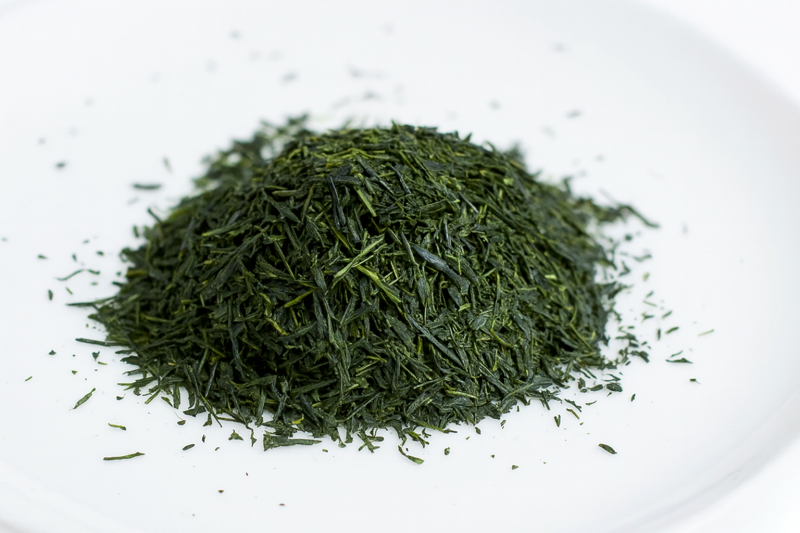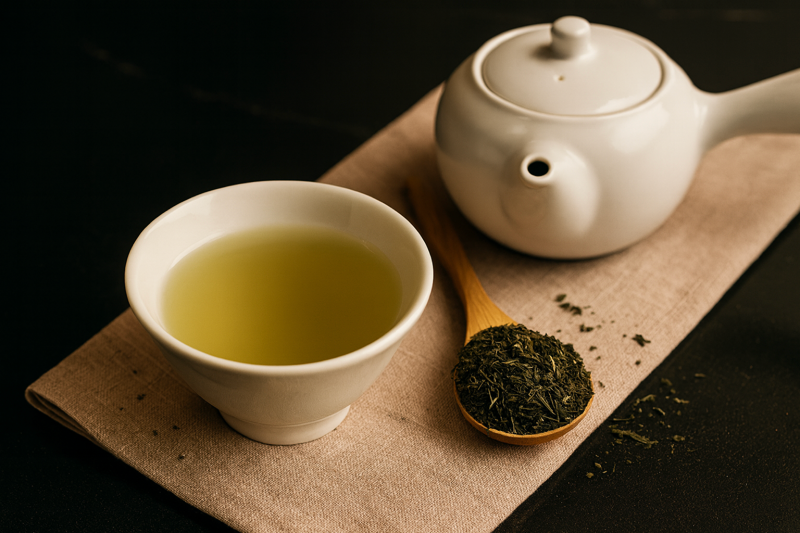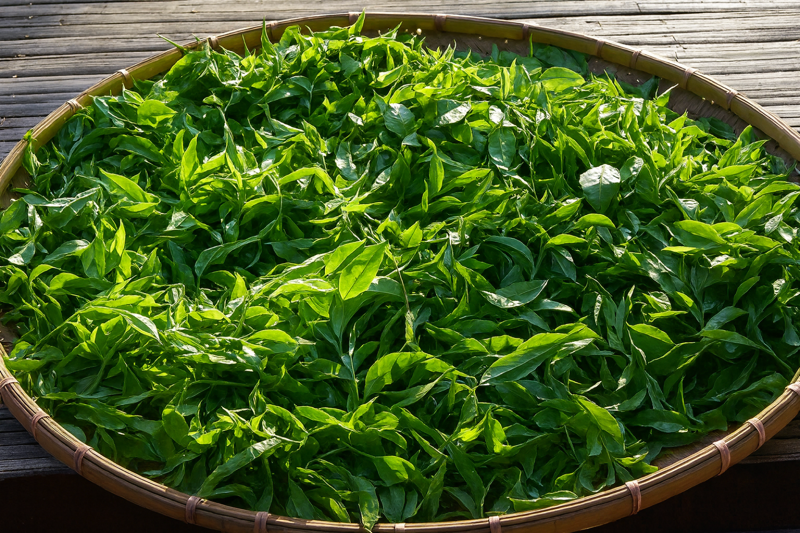Kabusecha
Smooth, sweet, and lightly shaded — between Sencha and Gyokuro.
- Category: Shade-grown green tea (Camellia sinensis)
- Origin: Japan — primarily from Shizuoka, Uji (Kyoto), and Kagoshima.
- Harvest: First flush (ichibancha), shaded for 7–14 days before harvest, shorter than Gyokuro.
- Grade: Premium Kabusecha; Standard Kabusecha; Regional Kabusecha



Tasting Profile
Brewing Guide
- Tea-to-water ratio~5 g tea leaves per 200 ml water.
- Water temperature60–70 °C (140–158 °F) — cooler to preserve sweetness and reduce bitterness.
- Steeping timeFirst infusion: 90 seconds; second and third infusions: 30–60 seconds.
- Infusions2–3 infusions; the first highlights umami, later ones bring lighter grassy sweetness.
Background & Story
Kabusecha, often translated as “covered tea,” is a unique Japanese green tea that sits between sencha and gyokuro in character. It is produced using a semi-shading method, where tea bushes are covered with cloth or netting for about one to two weeks before harvest. This partial shading gently alters the chemistry of the leaves, giving kabusecha more sweetness and umami than sencha, but less intensity than the fully shaded gyokuro. The result is a tea prized for its balanced flavor, smooth mouthfeel, and refreshing finish.
The shading process is central to kabusecha’s identity. By limiting sunlight, the plant reduces catechin production (which creates bitterness) and increases amino acids, particularly L-theanine, which are responsible for the tea’s natural sweetness and savory umami. Chlorophyll levels also rise, giving the leaves a deeper green color and producing a liquor that is vibrant and aromatic.
Kabusecha is generally harvested during the first flush (ichibancha) in late spring, when the leaves are young and tender. The processing steps are similar to sencha: steaming, rolling, and drying. However, because of its partial shading, kabusecha retains a softness and richness that distinguishes it from other Japanese green teas.
Traditionally, kabusecha was less widely produced than sencha or gyokuro, but it has gained appreciation among tea enthusiasts who value its balance of affordability and refinement. While gyokuro is often reserved for special occasions, kabusecha provides an accessible way to enjoy the qualities of shaded tea in daily life.
Regions such as Shizuoka, Uji, and Kagoshima are known for kabusecha production, each imparting subtle variations in taste and aroma. Whether enjoyed hot in spring or cold-brewed in summer, kabusecha offers a harmonious blend of freshness and depth, embodying the middle ground of Japan’s green tea spectrum.
Benefits
- Balanced in caffeine, offering calm alertness without overstimulation
- Rich in L-theanine, promoting relaxation and mental clarity
- Provides antioxidants and polyphenols that help protect against oxidative stress
- Gentle on the stomach due to reduced bitterness from partial shading
- Supports heart health and metabolism through catechins and minerals
Serving Suggestions
Pairings
- Lightly seasoned sushi or sashimi to complement its clean umami
- Steamed seasonal vegetables such as spinach or green beans
- Mild cheeses like fresh mozzarella or ricotta
- Delicate wagashi (Japanese sweets) such as yokan or mochi
- Grilled white fish or lightly salted rice dishes
Teaware
- Kyusu (Japanese side-handle teapot)
- Yunomi (Japanese tea cup)
- Chazutsu (airtight tea canister)
Nutrition Facts
Serving Size: 1 cup brewed Kabusecha (240 ml)
| Nutrient | Amount per Serving | % Daily Value* |
|---|---|---|
| Calories | 0 | 0% |
| Total Fat | 0 g | 0% |
| Sodium | 0 mg | 0% |
| Total Carbohydrates | 0 g | 0% |
| Protein | 0 g | 0% |
| Vitamin C | 5–8 mg | 7–10% |
| Vitamin A (beta-carotene) | Trace | <1% |
| Calcium | 3–5 mg | <1% |
| Potassium | 20–35 mg | <1% |
| Magnesium | 2–4 mg | 1% |
| Caffeine | 20–30 mg | — |
| L-theanine | 10–14 mg | — |
| Catechins (EGCG) | 25–45 mg | — |
| Polyphenols | 60–80 mg | — |
| Chlorophyll | Present (higher than Sencha, lower than Gyokuro) | — |
**Percent Daily Values are based on a 2,000 calorie diet.
† Functional compounds such as caffeine, L-theanine, catechins, polyphenols, and chlorophyll do not have established %DV but contribute significantly to Kabusecha’s balanced health benefits.